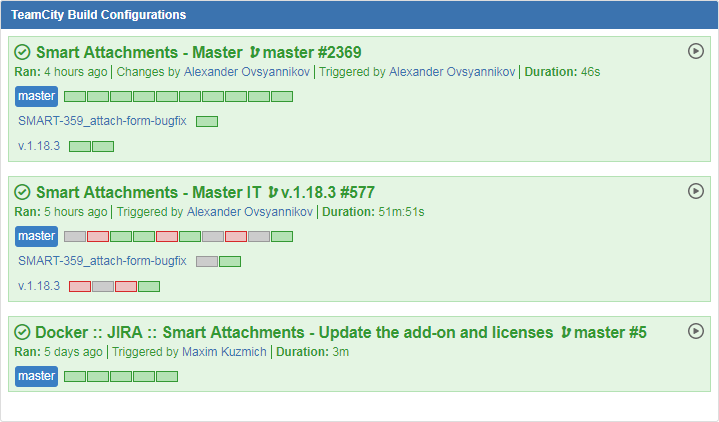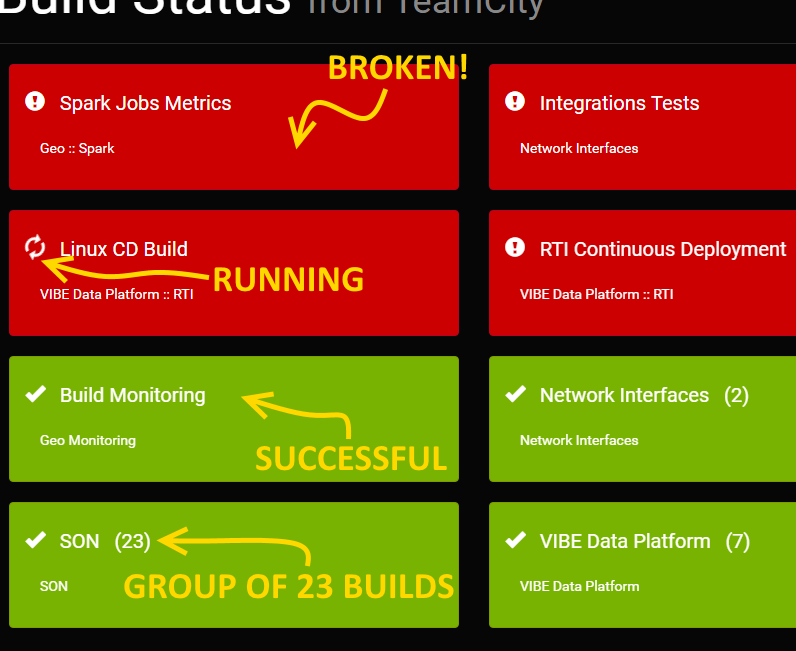
#TEAMCITY BUILDS SOFTWARE#
These two techniques enable development teams to deploy software rapidly, repeatedly, and reliably. Features are released as soon as they are ready, providing maximum value to customers. This process makes the entire software release process automated. When continuous delivery is implemented properly, developers will always have a deployment-ready build artifact that has undergone a standardized test process.Ĭontinuous deployment is the process of deploying application revisions to a production environment automatically, without explicit approval from a developer.
#TEAMCITY BUILDS CODE#
The practice expands on continuous integration by deploying all code changes to a testing environment and/or a production environment after the build stage.

Organizations that transform their applications to cloud-optimized architectures need a seamless, end-to-end continuous delivery and deployment workflow: from source code, to build, to deployment, to software delivery.Ĭontinuous delivery is a DevOps software development practice where code changes are automatically built, tested, and prepared for a release to production. By Balaji Iyer, Janisha Anand, and Frank Li
#TEAMCITY BUILDS HOW TO#
How to build pipelines and package applications for.Documentation: Integrate TeamCity and Octopus Deploy.If you are using OctoPack, for example, the build number can be used as the value of the OctoPackPackageVersion MSBuild parameter so that your NuGet packages match the build number. Now that %build.number% is based on the branch, your TeamCity build has a consistent build number that can then be used in the rest of your build steps. $branch = $branch.substring($branch.lastIndexOf("/")).trim("/") # If so we'll base our logic just on the last part.
#TEAMCITY BUILDS FULL#
# Sometimes the branch will be a full path, e.g., 'refs/heads/master'. # This gets the name of the current Git branch. # TeamCity's auto-incrementing build counter ensures each build is unique # Depending on the branch, we will use different major/minor versions To dynamically set the build number based on the branch name, I’m going to add a PowerShell script step as the first build step in my build:įinally, here’s the PowerShell script: # These are project build parameters in TeamCity

These need to be system parameters in TeamCity so that they can build scripts. To do this, we’re going to define two parameters in TeamCity. Putting it togetherĭepending on whether the branch name is master or develop, we will use different major/minor build numbers. This will override the build number, and the new value will then be passed to the rest of the steps in the build. That is, your build script can write the following text to stdout: #teamcity However, you can also set it dynamically during the build, using service messages.

The format of build.number and value of unter is defined in the TeamCity UI: By default, it is %unter%, but it can be more complicated.


 0 kommentar(er)
0 kommentar(er)
